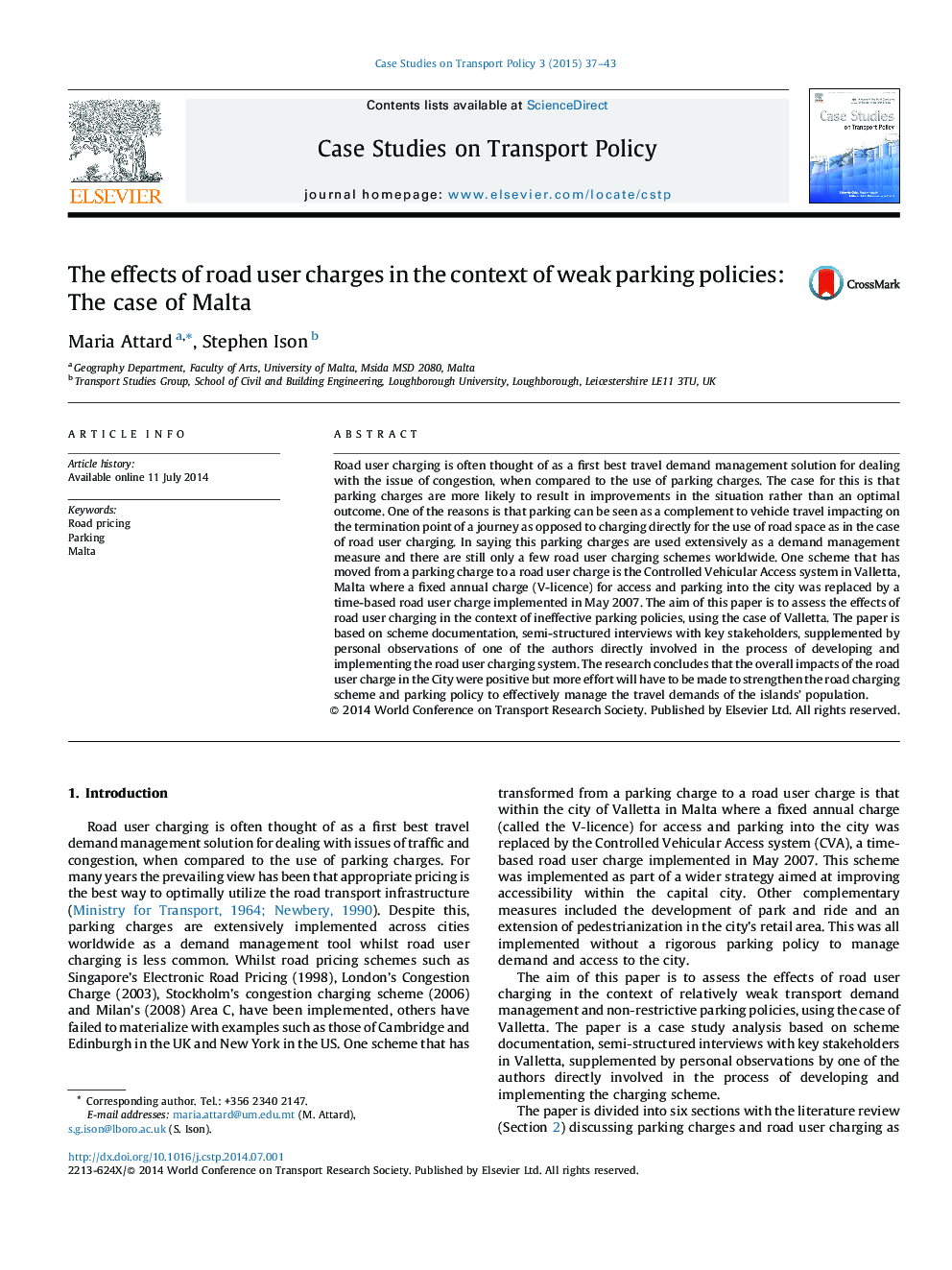| کد مقاله | کد نشریه | سال انتشار | مقاله انگلیسی | نسخه تمام متن |
|---|---|---|---|---|
| 250674 | 502894 | 2015 | 7 صفحه PDF | دانلود رایگان |
• A comparison of parking management and road user charging, using the case of Valletta, Malta.
• The move from the V-licence parking fee to the CVA road user charge brought about a shift from private to public transport.
• It is possible to introduce road user charging as a more effective and efficient pricing mechanism than parking.
Road user charging is often thought of as a first best travel demand management solution for dealing with the issue of congestion, when compared to the use of parking charges. The case for this is that parking charges are more likely to result in improvements in the situation rather than an optimal outcome. One of the reasons is that parking can be seen as a complement to vehicle travel impacting on the termination point of a journey as opposed to charging directly for the use of road space as in the case of road user charging. In saying this parking charges are used extensively as a demand management measure and there are still only a few road user charging schemes worldwide. One scheme that has moved from a parking charge to a road user charge is the Controlled Vehicular Access system in Valletta, Malta where a fixed annual charge (V-licence) for access and parking into the city was replaced by a time-based road user charge implemented in May 2007. The aim of this paper is to assess the effects of road user charging in the context of ineffective parking policies, using the case of Valletta. The paper is based on scheme documentation, semi-structured interviews with key stakeholders, supplemented by personal observations of one of the authors directly involved in the process of developing and implementing the road user charging system. The research concludes that the overall impacts of the road user charge in the City were positive but more effort will have to be made to strengthen the road charging scheme and parking policy to effectively manage the travel demands of the islands’ population.
Journal: Case Studies on Transport Policy - Volume 3, Issue 1, March 2015, Pages 37–43
